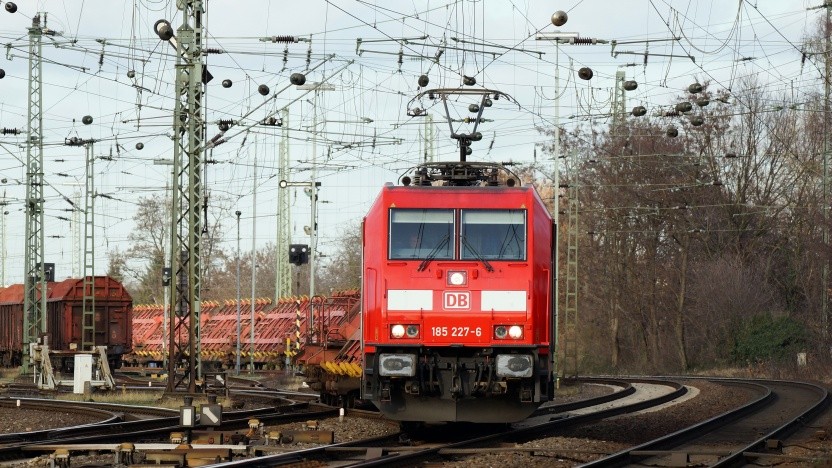The heavy goods and delivery traffic should be electrified more strongly. For kilometer-wise overhead lines are to arise. That money in this way to stick in trucks instead of the train, but is completely insane!
An IMHO
from
Sebastian Grüner
January 16, 2019, 12:01 pm

So is freight transport on the overhead line!
(Image: Rolf Heinrich, Cologne/CC-BY 3.0)
For several years, vehicle manufacturers and large technology companies have been testing the use of overhead lines for transporting goods. The heavy traffic is to be electrified thereby, which in turn should protect the environment. For about a month now synonymous run first tests in Germany and in future thousands of kilometers of overhead line could be built.
Content:
Truck-centered traffic logic is the problem
Train instead of too many trucks
These sentences could have appeared one or two hundred years ago – in relation to the railway. However, the fact that the current tests refer to the parallel expansion for trucks and thus are actually superfluous is not only evident in the 100 years delay.
First, an inventory of the currently available technology is worthwhile. As mentioned tested among others Siemens since 2014, a combination of electrically powered truck with customers and a catenary for power supply. The overhead line is here above all seen as an alternative to the previously used in electrically powered vehicles batteries. After all, the batteries for the usual loads of trucks would be too expensive, too big and too heavy and would probably reduce the actual transport capacity.
The fact that parallel to the currently planned or at least targeted electrification of motorized private transport (MIV) and the heavy-duty traffic is to be electrified in order to get away from the combustion engine, may seem logical. After all, in 2025 an electric truck with a pantograph for a catenary (O truck) according to studies 25 percent less carbon dioxide emissions than a comparable truck with a diesel engine.
Job market
CSL Behring GmbH, Marburg, Hattersheim am Main
Robert Bosch GmbH, Stuttgart
This sounds similar to the MIV tempting for the purpose of environmental protection and to reduce greenhouse gases. What is forgotten in this consideration, or at least ignored, is that we already have a huge electrified infrastructure for heavy transport in Germany available: the railway.
Alone the German course operates around 20,200 km of electrified infrastructure. After all, this corresponds to around 60 percent of the total operating life of Deutsche Bahn. Alone in the next few years should be added about 500 km, In addition, as part of the 2030 Federal Transport Infrastructure Plan and other programs, the federal and state governments have announced the need to electrify another thousand kilometers of rail network.
In this regard, there are no more thousands of kilometers of networks for trams, subways or S-Bahn trains, which can not be easily used over the usual rolling stock of the railway because of different power systems, gauges or dimensions, but still provide electrified infrastructure , The entire rail network in Germany covers around 42,000 km (PDF). Of these, about half are already electrified.
Just for comparison: The German motorway network covers about 13,000 km, plus an additional 38,000 kilometers of federal highways, a total of about 51,000 km. However, apart from the few test kilometers, nothing has been electrified in Germany for heavy goods traffic. The question as to why a parallel infrastructure for lorries next to the train should be built up, is almost inevitable. The answers provided by the supporters of the O-truck, however, are more than meager. In addition, they expose the questionable nature of the project.
Topics Pages:
electromobility
automobile
electric car
German Railways
Siemens
science
